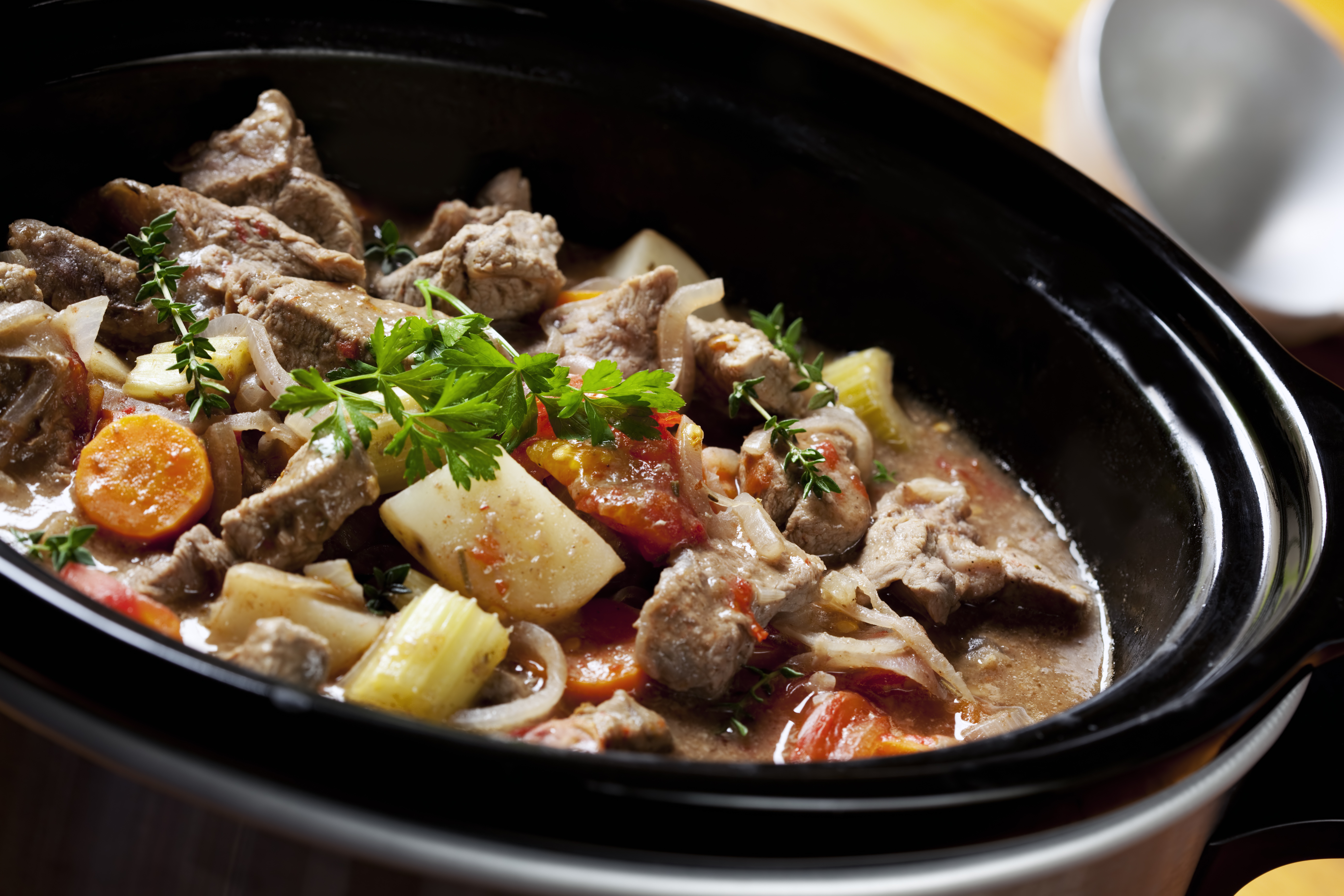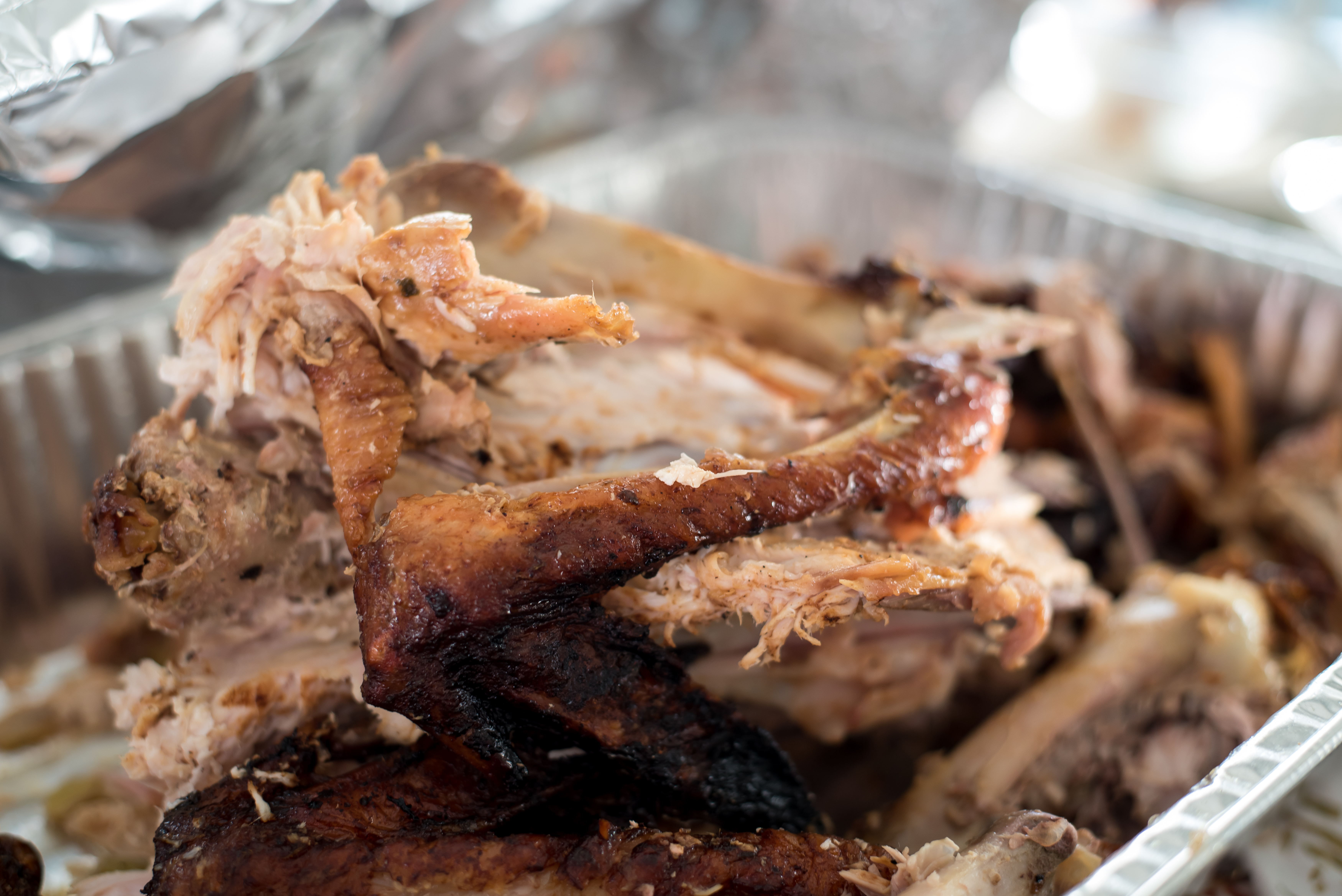
Asar a la parrilla y seguridad alimentaria
Antes, cocinar al aire libre solo se consideraba estrictamente una actividad de verano, pero ahora más de la mitad de los estadounidenses dicen que cocinan al aire libre durante todo el año. Ya sea que esté nevando o que brille el sol, es importante seguir las pautas de seguridad alimentaria para evitar que las bacterias dañinas se multipliquen y causen enfermedades transmitidas por los alimentos al cocinar al aire libre. Use estas sencillas pautas para asar alimentos de manera segura.
De la tienda: Primero en casa
Cuando vaya de compras, compre alimentos fríos como carnes y aves al final, justo antes de pagar. Separe la carne y las aves crudas de otros alimentos en su carrito de compras. Para protegerse contra la contaminación cruzada, que puede ocurrir cuando los jugos de carne o aves crudas gotean sobre otros alimentos, coloque los paquetes de carnes y aves crudas en bolsas de plástico.
Planee conducir directamente a casa desde la tienda de comestibles. Es posible que desee llevar una hielera con hielo para productos perecederos. Siempre refrigere los alimentos perecederos dentro de las 2 horas. Refrigere dentro de 1 hora cuando la temperatura sea superior a 90 °F.
En casa, coloque la carne y las aves en el refrigerador inmediatamente. Congele las aves y la carne molida que no vaya a usar en 1 o 2 días; congelar otras carnes dentro de 4 a 5 días.
Descongelar con seguridad
Descongele completamente la carne y las aves antes de asarlas a la parrilla para que se cocinen de manera más uniforme. Use el refrigerador para una descongelación lenta y segura o descongele paquetes sellados en agua fría. Puede usar el microondas para descongelar si la comida se colocará inmediatamente en la parrilla.
Marinar
Un adobo es una salsa ácida y salada en la que se sumerge un alimento para enriquecer su sabor o ablandarlo.
La mayoría de las recetas para marinar carnes y aves recomiendan entre seis y 24 horas. Es seguro mantener la comida en el adobo por más tiempo, pero después de dos días es posible que el adobo comience a descomponer las fibras de la carne, haciendo que se vuelva blanda. Marinar siempre la carne y las aves en el refrigerador, no en la encimera.
Si parte de la marinada se va a usar como salsa en los alimentos cocinados, reserve una porción de la marinada antes de ponerle carnes y aves crudas.
Hierva la marinada usada si quiere untarla sobre la carne o el ave mientras se asa a la parrilla. Cada vez que se vaya a reutilizar el adobo utilizado en carnes o aves crudas, asegúrese de dejar que hierva durante unos minutos para destruir cualquier bacteria dañina. Luego guarde la marinada en recipientes poco profundos en el refrigerador para su uso posterior.
Transporte
Cuando lleve alimentos a otro lugar, manténgalos fríos para minimizar el crecimiento bacteriano. Use una hielera aislada con suficiente hielo o bolsas de hielo para mantener la comida a 40 °F o menos. Empaque los alimentos directamente del refrigerador a la hielera inmediatamente antes de salir de casa.
Mantener fríos los alimentos fríos
Mantenga la carne y las aves refrigeradas hasta que esté listo para usar. Solo saque la carne y las aves que se colocarán inmediatamente en la parrilla.
Cuando use una hielera, manténgala alejada de la luz directa del sol colocándola a la sombra o en un refugio. Evite abrir la tapa con demasiada frecuencia, lo que permite que salga aire frío y entre aire caliente. Empaque las bebidas en un refrigerador y los productos perecederos en un refrigerador separado.
Guarde la carne y las aves crudas en paquetes bien cerrados en el fondo de la hielera, debajo de otros alimentos. Esto ayudará a evitar la contaminación cruzada. Si el jugo de ave se derrama sobre otras carnes, entonces esa carne debe cocinarse a una temperatura interna de 165 F.
Mantenga todo limpio
Asegúrese de que haya muchos utensilios y platos limpios. Para prevenir las enfermedades transmitidas por los alimentos, no use el mismo plato y los mismos utensilios para carnes y aves crudas y cocidas. Las bacterias dañinas presentes en la carne y las aves crudas y sus jugos pueden contaminar los alimentos cocidos de manera segura.
Si está comiendo fuera de casa, averigüe si hay una fuente de agua limpia. Si no, llevar agua para la preparación de alimentos, lavado de manos, superficies y utensilios. De lo contrario, empaque paños limpios, toallitas húmedas a base de alcohol y desinfectante para manos. Asegúrese de que los desinfectantes tengan al menos un 60 % de contenido de alcohol.
Precocción
Precocinar parcialmente los alimentos en el microondas, el horno o la estufa es una buena manera de reducir el tiempo de asado. Solo asegúrese de que la comida vaya inmediatamente a la parrilla precalentada para completar la cocción.
Cocinar a fondo
Cocine los alimentos a una temperatura interna mínima segura para destruir las bacterias dañinas. La carne y las aves cocinadas a la parrilla a menudo se doran muy rápido por fuera. Use un termómetro para alimentos para asegurarse de que la comida haya alcanzado una temperatura interna mínima segura. Cocine la carne de res, cerdo, ternera y cordero (bistecs, asados y chuletas) a 145 °F y deje reposar durante 3 minutos. Las hamburguesas hechas de carne picada de res, cerdo, ternera y cordero deben alcanzar los 160 °F. Todas las aves (incluidas las molidas) deben alcanzar un mínimo de 165 °F.
NUNCA cocine parcialmente carnes o aves y termine de cocinarlas más tarde.
|
|
|
| Aves Enteras | 165 °F |
| Pechugas de Aves | 165 °F |
| Aves molidas | 165 °F |
| Hamburguesas, Carne De Res | 160 °F |
| Carne de res, Cerdo, Ternera, Cordero (bistecs, asados y chuletas) |
Medianamente raro: 145°F y dejar reposar al menos 3 minutos Medio: 160°F |
| Todos los Cortes de Cerdo | 160°F |
Recalentamiento
Cuando recaliente carnes completamente cocidas como salchichas, áselas a 165 °F o hasta que estén humeantes.
Mantener la comida caliente
Después de cocinar carnes y aves a la parrilla, manténgalas calientes hasta que las sirva, a 140 °F o más.
Mantenga calientes las carnes cocidas colocándolas a un lado de la rejilla de la parrilla, no directamente sobre las brasas donde podrían cocinarse demasiado. En casa, la carne cocida se puede mantener caliente en un horno ajustado a aproximadamente 200 °F, en un plato de calor o en una olla de cocción lenta, o en una bandeja para calentar.
Servir la comida
Cuando retire la comida de la parrilla, use un plato limpio. No coloque alimentos cocidos en el mismo plato que tenía carne o aves crudas. Cualquier bacteria dañina presente en los jugos de la carne cruda podría contaminar los alimentos cocidos de manera segura. Cuando hace calor (más de 90 °F), la comida nunca debe permanecer afuera por más de 1 hora.
Sobras
Refrigere las sobras de inmediato en recipientes poco profundos. Deseche cualquier alimento que haya quedado afuera por más de 2 horas (1 hora si la temperatura supera los 90 °F).
¡RECORDAR! Siempre refrigere los alimentos perecederos dentro de las 2 horas. Refrigere dentro de 1 hora cuando la temperatura sea superior a 90 °F.
Ahumar seguramente
Ahumar es cocinar alimentos indirectamente en presencia de un fuego. Se puede hacer en una parrilla cubierta si se coloca una olla con agua debajo de la carne en la parrilla. Las carnes también se pueden ahumar en un “ahumador”, que es una cocina al aire libre especialmente diseñada para ahumar alimentos. El ahumado se realiza mucho más lentamente que la parrilla, por lo que las carnes menos tiernas se benefician de este método y un sabor a humo natural impregna la carne. Se necesita un termómetro para controlar la temperatura del aire en el ahumador o la parrilla para asegurarse de que el calor se mantenga entre 225 y 300 °F durante todo el proceso de cocción”.
Use un termómetro para alimentos para asegurarse de que la comida haya alcanzado una temperatura interna segura.
Asado en hoyo
Asar a la fosa consiste en cocinar la carne en un hoyo grande y nivelado excavado en la tierra. Se enciende un fuego de madera dura en la fosa, que requiere una cantidad de madera equivalente a aproximadamente 2 1/2 veces el volumen de la fosa. Se permite que la madera dura se queme hasta que la madera se reduce y el hoyo se llena hasta la mitad con carbones ardientes. Esto puede requerir de 4 a 6 horas de tiempo de combustión.
La cocción puede requerir de 10 a 12 horas o más y es difícil de estimar. Se debe usar un termómetro para alimentos para determinar la inocuidad y el punto de cocción de la carne. Hay muchas variables, como la temperatura exterior, el tamaño y el grosor de la carne, y qué tan rápido se cocinan las brasas.



